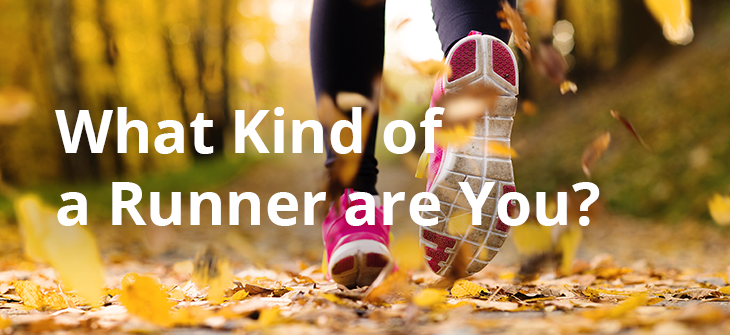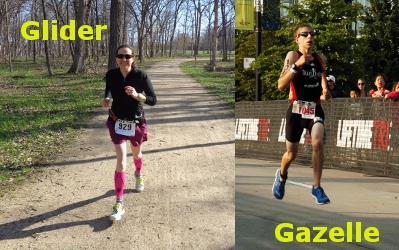A few years back I saw a YouTube video by Todd Kenyon, PhD from www.TTBIKEFIT.com. He was comparing the two primary running styles of elite ironman triathletes. He called the 2 running styles, gazelles and gliders.
When I began running over 10 years ago, in my early 40s, I would run on the Des Plaines River trail with my husband riding his bike alongside of me. When I initially started running, I never dreamed I would become a runner. However, running along the forested path beside the Des Plaines River, gave me a newfound sense of joy. I found myself enjoying the kinesthetic movement of my legs propelling me forward, and I became addicted. My husband would observe my gait and wonder out loud “you don’t look like a Gazelle like that woman who just ran by.” I would say to him, “I’m new to this; it takes time.”
Over the ensuing years, I began to study and work diligently on my form.
I wasn’t trying to look like a gazelle, but to overcome multiple injuries, prevent further injuries, and become a more efficient runner. I felt pretty good about myself as I sensed the form and cadence change in my run.
I videotaped and analyzed my son’s running. He flies through the air with great ease at 6-minute-per-mile pace, no sooner does a foot touch the ground then he’s off of it, standing up tall with a fully extended leg on the back stroke driving his knee forward.
When videotaped, it’s clear that my son runs like a Gazelle!
Well, surely I must be able to look like a gazelle if I gave birth to a Gazelle – right? My son videotaped me, and, hmmm….I’m leaning nicely from the ankles, standing tall, looking straight ahead, no significant hip drop, mid-foot strike, and a 184 steps per minute cadence.
But, I sure don’t look like a Gazelle and I’m doing all the basics right. What’s missing?
When videotaped, it’s clear that I’m a Glider, not a Gazelle — and that’s okay!
The Glider’s form can be more efficient and help avoid injury.
In the first video above, Todd points out that the glider’s form can be more efficient, with shorter stride length, less bounce, increased cadence and decreased air time (the time between toe off of one foot to foot strike of the other foot is very minimal). This efficient form of running may be the best for runners over the age of 40. Gliding is best avoid injury, as it does not require the same amount of elasticity in the tissues as running like a Gazelle. As people age, the elasticity in their tissues become tighter and can become more prone to injury. Of course, there are age 40+ runners who do run like Gazelles, but they do not need to change their form unless they are suffering injuries. If they are getting injured, then a form change may be in order.
The Gazelle, on the other hand, is someone who is born with that capability, either you can run like a Gazelle or you can’t.
Gazelles have increased air time both vertical and horizontal, allowing greater distance per stride than the glider. Gazelles will have greater ability to use the stored recoil in their tendons and to absorb this great force when landing. Anyone running under a 6 minute mile will have the form of a Gazelle.
Whether you’re a Gazelle or a Glider, the following are some running form guidelines for everyone:
- Run tall and look straight ahead
- Engage core/lower abdominals — Watch this video on how to engage your abs
- Swing your arms at 90 degrees, close to body, driving elbows back, not crossing body
- Foot strike lands close to body
- Knees pointing straight ahead
- Ankles –slight lean
- Cadence – 172-185 steps/minute
Not everyone can have the beauty and grace of a Gazelle running form like my son. Maybe you’re a Glider like me, and that’s okay. At least you are out there running.
Are you a gazelle or a glider? Videotape yourself and let me know – or better yet come on in for a running analysis!








Leave a Reply